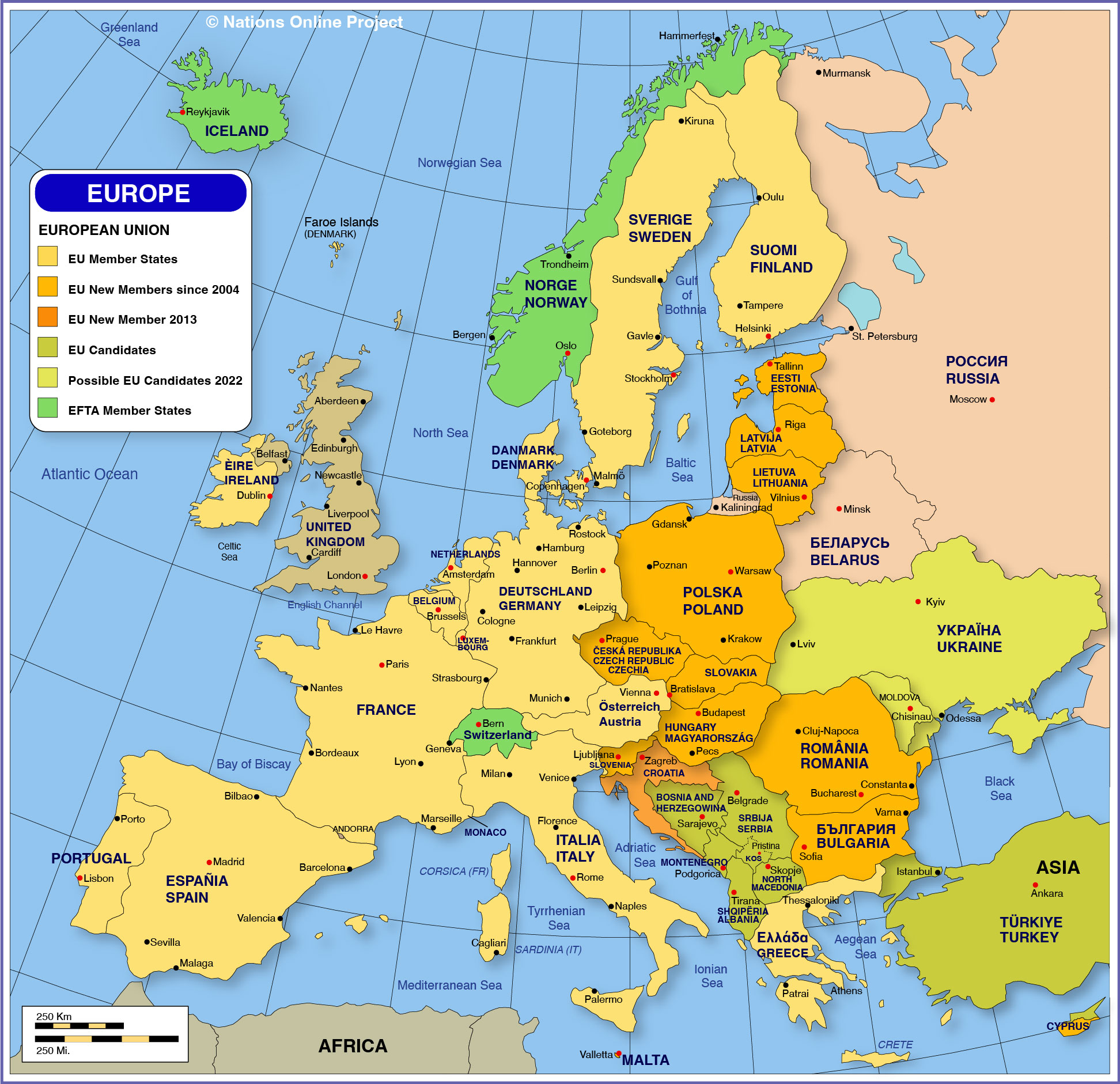
The Golden Goose: Unpacking the Multi-Billion Dollar Distribution of UEFA Champions League Prize Money
The UEFA Champions League, football’s most prestigious club competition, is not just a battleground for sporting supremacy; it is also an unparalleled financial engine, generating billions of euros annually. For the elite clubs of Europe, participation, let alone success, in the Champions League is a colossal financial boon, impacting everything from transfer budgets and player salaries to stadium infrastructure and long-term sustainability. However, the distribution of this vast wealth is a complex, multi-layered system designed to reward performance, historical success, and market appeal, while also attempting to foster a degree of solidarity across the European football landscape.
Understanding how this multi-billion euro pie is sliced requires delving into the various streams of revenue that UEFA collects and subsequently distributes. While the exact figures fluctuate slightly year-on-year based on commercial deals and overall revenue, the underlying principles and distribution mechanisms remain remarkably consistent.
The Total Revenue Pool: A Multi-Billion Enterprise
UEFA’s primary source of revenue for the Champions League (and Europa League/Conference League) comes from television broadcasting rights, followed by commercial sponsorships, ticketing, and hospitality. For the 2021-2024 cycle, UEFA projected a gross revenue of approximately €3.5 billion per season for its club competitions. Of this substantial sum, a significant portion is allocated to participating clubs, with a smaller percentage retained by UEFA for organizational costs, and a crucial share dedicated to solidarity payments.
Typically, around 75-80% of the gross revenue is earmarked for distribution to the clubs participating in the Champions League and Europa League/Conference League, with the Champions League clubs receiving the lion’s share. The remaining percentage covers UEFA’s administrative expenses and solidarity payments to non-participating clubs and national associations.
The prize money itself is distributed through four main pillars:
- Starting Fees (Participation Bonus)
- Performance-Based Bonuses
- UEFA Coefficient Ranking Pool
- Market Pool
Let’s break down each of these in detail.
1. Starting Fees (Participation Bonus)
The first, and perhaps most straightforward, slice of the pie is the fixed starting fee. Every club that qualifies for the Champions League group stage automatically receives a substantial participation bonus. This ensures that even clubs that perform poorly in the group stage or are simply happy to have reached this level are guaranteed a significant financial uplift.
This base payment is designed to cover some of the immediate costs associated with participation, such as increased travel expenses, potential player bonuses, and general operational costs. For the 2021-2024 cycle, this figure stood at approximately €15.64 million per club. While a massive sum for smaller clubs, for the European giants, it’s just the tip of the iceberg of their potential earnings.
2. Performance-Based Bonuses
This pillar directly rewards sporting success on the pitch. The better a team performs, the more money they accrue. This is a powerful incentive for clubs to field their strongest teams and compete fiercely in every match.
The performance bonuses are structured as follows:
- Group Stage Wins: Each victory in the group stage is worth a significant sum (e.g., €2.8 million).
- Group Stage Draws: A draw also yields prize money, albeit a smaller amount (e.g., €930,000). Undistributed amounts from draws are then aggregated and distributed proportionally among all group stage clubs based on their number of wins.
- Progression to Knockout Rounds: Advancing through each stage of the competition brings increasingly larger sums:
- Round of 16: Approximately €9.6 million
- Quarter-finals: Approximately €10.6 million
- Semi-finals: Approximately €12.5 million
- Finalists: Approximately €15.5 million
- Champions: The winner of the final receives an additional €4.5 million on top of the finalist’s fee.
- UEFA Super Cup Winner: The winner of the UEFA Super Cup also receives an additional bonus.
These performance-based payments ensure that sporting merit is directly translated into financial reward, creating a compelling narrative where every goal, every save, and every tactical decision has tangible financial consequences.
3. UEFA Coefficient Ranking Pool (The 10-Year Coefficient)
Introduced in the 2018-19 season, the UEFA Coefficient Ranking Pool is a more recent addition to the distribution model, and it significantly benefits clubs with a strong historical performance in UEFA club competitions. This system allocates funds based on a club’s performance over the past ten years in the Champions League, Europa League, and Conference League.
Clubs are ranked according to their coefficient points, which are accumulated based on wins, draws, and progression through the various stages of these competitions. The total amount allocated to this pool (e.g., €600.6 million) is then divided into "shares" based on this ranking. The lowest-ranked club in the Champions League group stage receives one share, the next lowest two shares, and so on, up to the highest-ranked club receiving 32 shares. Each share is worth a specific amount (e.g., €1.137 million).
This means that a historically successful club like Real Madrid, Bayern Munich, or Barcelona, even if they have a slightly less successful season or an early exit, are still guaranteed a massive payout from this pool simply due to their consistent excellence over the past decade. This pillar was partly introduced to appease the bigger clubs who felt that the previous distribution models didn’t sufficiently reward their consistent contributions to the competition’s prestige and viewership. It inevitably contributes to the widening financial gap between the traditional elite and emerging clubs.
4. Market Pool
The Market Pool is arguably the most complex and often the most contentious aspect of the Champions League prize money distribution. It reflects the proportional value of each club’s national television market to UEFA’s overall broadcasting revenue. In essence, the more valuable a country’s TV rights deal for the Champions League, the larger the share of the Market Pool its participating clubs will receive.
The Market Pool (e.g., €300.3 million) is divided into two parts:
- Part 1: Based on Domestic League Performance (Previous Season): Half of the market pool is distributed based on the previous season’s domestic league performance and the number of Champions League clubs from that association. For instance, if a country has four Champions League participants, the league winner might get 40% of their country’s market pool share, the runner-up 30%, third place 20%, and fourth place 10%.
- Part 2: Based on Champions League Progression: The other half of the market pool is distributed based on the progress of each club in the current Champions League campaign. Clubs that go further in the competition receive a larger share of their national market pool.
This system inherently creates significant disparities. A club from a major footballing nation with lucrative TV deals (e.g., England, Spain, Germany, Italy) will receive a far greater share from the Market Pool than a club from a smaller nation, even if both clubs perform similarly on the pitch. For example, an English club finishing fourth in the Premier League and exiting the Champions League in the group stage might still earn more from the Market Pool than a club from a less commercially lucrative league that reaches the semi-finals. This element is a direct reflection of the commercial realities of modern football, where broadcasting revenue dominates, and certain markets command higher prices.
Solidarity Payments: Supporting the Wider Ecosystem
While the majority of the prize money goes to the participating clubs, UEFA also allocates a significant portion of its overall revenue to "solidarity payments." These payments are crucial for the health of European football beyond the elite few. They are distributed to:
- Clubs participating in the Champions League and Europa League qualifying rounds: These payments help cover the costs of early-stage participation, even if clubs don’t reach the group stages.
- Clubs that do not qualify for UEFA club competitions: A percentage of the revenue is distributed via national associations to clubs that do not participate in any of UEFA’s main competitions. This money is typically earmarked for youth development programs, infrastructure improvements, and general operating costs within domestic leagues.
- National Associations: Funds are also provided to national associations for various development programs.
These solidarity payments aim to somewhat mitigate the widening financial gap created by the Champions League’s vast revenues, ensuring that a basic level of financial support trickles down to grassroots football and smaller clubs, promoting overall football development across the continent.
The Impact and Implications of the Distribution Model
The Champions League prize money distribution system has profound impacts on European football:
- Widening Financial Disparity: While solidarity payments exist, the sheer scale of the funds distributed through performance, coefficient, and especially the market pool means that the richest clubs tend to get richer. This creates a self-reinforcing cycle: more money allows clubs to buy better players, build better facilities, attract more fans, achieve more success, and thus earn even more money. This exacerbates the financial gap between the "super clubs" and the rest, making it increasingly difficult for smaller clubs to compete consistently at the highest level.
- Competitive Imbalance: The financial disparity directly translates into competitive imbalance within domestic leagues and, to a lesser extent, in the Champions League itself. Clubs with larger budgets can attract top talent globally, leaving smaller clubs to develop and sell players rather than retain them.
- The "Super League" Threat: The desire for even greater financial certainty and larger guaranteed revenues from the biggest clubs has repeatedly led to discussions and attempts to form a breakaway "Super League." UEFA’s adjustments to the distribution model, particularly the emphasis on the coefficient ranking, can be seen as a strategic move to appease these powerful clubs and keep them within the UEFA ecosystem.
- Financial Fair Play (FFP): Champions League prize money plays a crucial role in how clubs manage their finances under UEFA’s Financial Fair Play regulations. For many clubs, participation and success in the Champions League are essential to balance their books, cover massive wage bills, and invest in transfers without falling foul of FFP rules. However, it also means that failure to qualify can have dire financial consequences.
- Sustainability and Investment: For many clubs, Champions League revenue allows for significant long-term investments in youth academies, training facilities, and stadium improvements, which are vital for the sustainable growth of the club and the sport.
Conclusion
The distribution of UEFA Champions League prize money is a meticulously crafted, yet ever-evolving, system that attempts to balance various objectives: rewarding sporting excellence, acknowledging historical contributions, leveraging commercial market value, and fostering a degree of solidarity across the European football pyramid. It is a testament to the immense commercial power of the competition, transforming it from a mere sporting event into a multi-billion euro enterprise that shapes the financial landscape of football.
While the system undeniably contributes to the financial stratification within European football, it also provides an unparalleled incentive for clubs to strive for excellence, and it underpins much of the investment and development that occurs within the sport. As the global appeal of football continues to grow, the Champions League’s financial model will remain a subject of intense scrutiny and debate, continually adapting to the shifting dynamics of the beautiful game.



